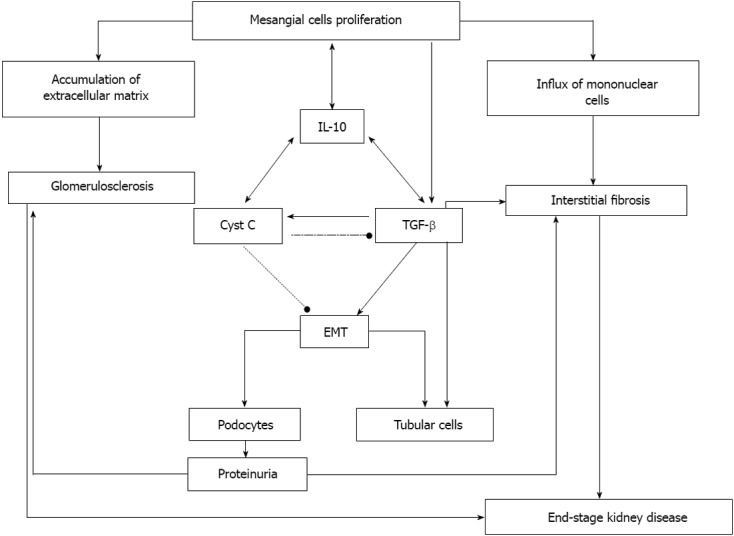Figure 1.

Interleukin-10 functions in the progression of renal failure. Interleukin-10 (IL-10) induces over-proliferation of mesangial cells that through an increased synthesis and secretion of a variety of growth factors, cytokines and chemokines, evoke several pathologic processes, leading to progression of renal failure. An increased secretion of components comprising the mesangial extracellular matrix results in its accumulation and is followed by the formation of fibrotic and sclerotic lesions in the glomeruli. IL-10 induces the synthesis and activity of Cystatin C (Cyst C) and transforming growth factor-β (TGF-β). Cystatin C regulates tissue inflammation and increases mesangial cell proliferation. Increased TGF-β levels act in parallel with IL-10 to promote fibrosis and glomerulosclerosis. In addition, the TGF-β-induced epithelial-to-mesenchymal transition in podocytes leads to the appearance of proteinuria. The development of proteinuria aggravates the processes of glomerulosclerosis and interstitial fibrosis and leads to end-stage kidney disease. EMT: Epithelial-to-mesenchymal transition.
